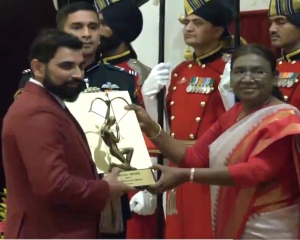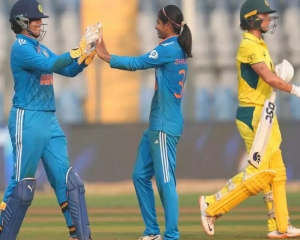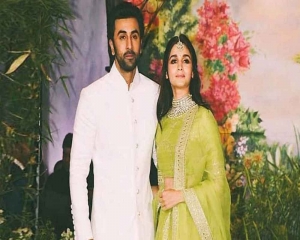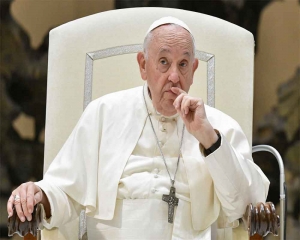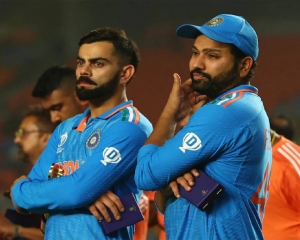Renowned for its rich culture, the Aryan Valley boasts a unique cultural and linguistic identity within Ladakh but if not preserved, it may perish soon
As summer approaches, travellers flock to Ladakh, a Union Territory in North India, and social media buzzes with snapshots showcasing colourful prayer flags against the stark mountains, valleys, local cuisine, and cultural gems. Amidst this visual treat, the Dard Aryan Tribe in the famous Aryan Valley stands out with their unique attire and headgear, adding a touch of local charm to the seasonal scene.
Located some 200 km from Leh, Aryan Valley, historically referred to as the DhaHanu region, is a distinct area comprising five villages – Dha, Hanu, Beema, Garkhon and Darchikspread across Leh and Kargil district. The tribe is largely dependent on agriculture and then tourism. Renowned for its rich culture, Aryan Valley boasts a unique cultural and linguistic identity within Ladakh. The inhabitants don distinctive traditional attire, setting them apart from other Ladakhi regions. Aryan people craft their clothing, with men donning garments like Goncha and Shanthab made from sheepskin. Additionally, they accessorize with elaborate Kagu jewellery, ranging from INR10000 to 70000 in value. The male attire is completed with a flower-adorned hat and Lanba Puma shoes for warmth in winter.
Aryan women showcase their allure in traditional dresses such as Stodcha (wool-made) and Lokpa (goat skin). Adorned with expensive gold and silver jewellery, including hats embellished with flowers like the ShokloMentok (Lampion flower) from their gardens, Aryan women also wear LanbaiPubu shoes. Festivals play a pivotal role in Aryan culture, with celebrations like the great harvest festival, Apricot blossoming, ChopoS rubla, and Losar featuring traditional dances and folk songs.
They speak a language distinct from other regions in Ladakh, officially recognized as the Dardi-Aryan language. Notably, Hanu is the sole village not using this local language but rather opting for Ladakhi. Elders from Hanu village share a tale of when a king forbade the use of the native language. In contrast, the villages of Dha, Garkhon, and Darchik, not subjected to the king's rule, continue to use their language. Recently, during the Aryan festival celebrated on October 2-3, 2023, in HanuGongma, a decision was made. The festival became a catalyst for the Hanu people to embrace their native language, marking a shift towards linguistic preservation.
Volunteer teachers from GarkhonDarchik, including Pro. TsewangGyalston, Mr. Sonam Norboo, Lec. NawangSih rap, Mr. KonchokChangpa, Lec. Dolker Arya, Mr ThinlasDorjay, and Mr KonchokSingay are actively involved in teaching the Dardi-Aryan language to Hanu students through online platforms like Zoom, WhatsApp, and audio recordings as most of them work in the Kargil district.
Feedback from the students indicates a positive response, expressing appreciation for the engaging and informative online classes. Recognizing the importance of preserving their cultural heritage, Aryan villagers are committed to fostering the learning and teaching of their language and traditions. The community has also urged the Commissioner/Secretary, Information Department, Ladakh UT, to broadcast Daily-Aryan Language Programs on All India Radio Kargil/Leh, similar to existing programs in other regional languages.The population of Aryan Valley is approximately 4927, distributed with 3111 residing in Kargil District and 1816 in Leh District.
Several noteworthy books, including "Dardistan" by Leitner, "Tribes of Hindukush" by Budluff, "Buddhist Dards of Ladakh" by Rohit Vohra, "Dard-An Indian Tribe" by Ali Hussain, and "Dardi Dictionary" by Tsewang Gyaltson, offer valuable insights into the rich cultural heritage of the Dard Aryan community. In 2019, 30 members of the Dard Aryan Tribe convened in the National Capital for a seminar, addressing the imperative need to preserve their legacy. During the discussions, they highlighted the challenges posed by modernization and migration, perceiving them as threats to their cultural identity.
In response, a memorandum was collaboratively drafted with expert assistance and submitted to the Centre, urging government intervention. However, as indicated by the Press Information Bureau, the Ministry of Tribal Affairs did not receive any formal communication from the concerned state regarding this matter.
(Deachen is a student of EJM College, Leh and is Charkha’s volunteer trainer; views are personal. Charkha Features)







